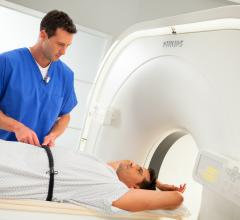If you enjoy this content, please share it with a colleague
Philips
RELATED CONTENT
August 7, 2017 — Profound Medical Corp. recently announced that all closing conditions have been satisfied and it has ...
Aktina Medical announced a collaboration with Philips Medical Systems and Elekta Instruments for SRS interlocking at the 2017 American Association of Physicists in Medicine (AAPM) conference.
One of the more significant advancements for interventional X-ray (IXR) in the past few years has been an increased focus on core and supporting technologies to provide high-quality, high-resolution images without a corresponding increase in radiation dose.
Philips announced it has received 510(k) clearance from the U.S. Food and Drug Administration (FDA) to market IntelliSpace Portal 9.0 and a range of innovative applications for radiology in the United States. The latest release of Philips’ clinical informatics platform for advanced visual analysis and quantification of medical images now offers enhanced additional applications for longitudinal brain imaging and multimodality tumor tracking, as well as optimized lung nodule assessment.
Philips announced that it will be showcasing molecular imaging solutions highlighting Philips’ commitment to innovation and more personalized care at the Society of Nuclear Medicine and Molecular Imaging (SNMMI) 2017 Annual Meeting.
Much has been documented about the role of enterprise imaging as part of the larger effort to integrate a single longitudinal patient record. Despite the many ways an imaging effort reflects an organization’s electronic medical record (EMR) effort, there remain some distinct differences. For one, an enterprise imaging effort requires more careful understanding of peripheral and disparate systems. As an initiative, this primarily will serve as a support technology to the EMR and will be successful based on how it optimizes existing systems. Second, departmental workflow must remain uncompromised as part of an efficacious care delivery ecosystem. The challenges associated with deploying an EMR and the well-documented dissatisfaction on clinical workflow cannot, and should not, characterize enterprise imaging.
Perhaps no issue has taken on more prominence in radiology than radiation safety for both patients and hospital staff. Several regulatory bodies have enacted guidelines in recent years to improve radiation dose monitoring and reporting for computed tomography (CT), including the Medical Imaging and Technology Alliance (MITA), which created the XR-29 “Smart Dose CT” standard. Beginning Jan. 1, 2016, the standard levied a reduction in Medicare reimbursement on the technical component of all diagnostic CT exams conducted on a non-compliant scanner. The initial reduction was set at 5 percent, but it jumped to 15 percent as of Jan. 1, 2017, giving providers and vendors even more incentive to closely monitor and manage dose.
Philips announced the introduction of IntelliSpace Radiology Analytics 1.2, the latest innovative solution for driving operational, financial and clinical insights within radiology departments.
Philips' mission is to build intuitive, scalable and customizable products that can be easily adapted to customers' needs. This approach is the foundation for the new Philips IntelliSpace Enterprise Edition.
Philips announced the debut of its TrueVue, GlassVue and aRevealA.I. capabilities on the company’s Epiq 7 and 5 and Affiniti 70 and 50 ultrasound systems. The new visualization tools work together to enable photorealistic, transparent and 3-D visualization in one touch, delivering more reproducible and lifelike ultrasound images than traditional technologies.


 August 07, 2017
August 07, 2017 







